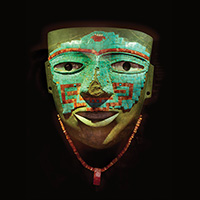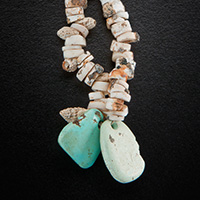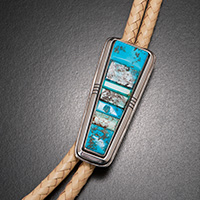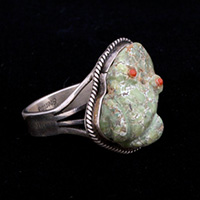Contemporary:
Turquoise into the Future
Charles Loloma (Hopi, 1921–1991) is perhaps the most influential Native American jeweler of the past fifty years. He created a new aesthetic by adding design elements from around the world and by incorporating new materials, like ironwood, fossil ivory, and gold into his work. Many artists today continue in his footsteps by using techniques he developed or refined, like vertically stacked inlay and soaring sculptural forms.
Yet ties to the past are strong for many contemporary artists, as seen in the symbols and materials they use. Turquoise and shell are often paired, as they have been for millennia. Water and sky symbols are common and many new designs refer to traditional beliefs and ways of life.
Contemporary artists are often drawn to the dramatic in turquoise, such as a lime-green color or dominant black spider web matrixes. However nothing speaks more eloquently of the value that turquoise still has for the traditional cultures of the Southwest than its use as the face in depictions of individuals and sacred beings. If our face signifies who we are, then Native Southwesterners are well symbolized by turquoise, a cultural element that simultaneously refers to the past, to a hopeful future, and to a good today.
(Bequest of Dr. Don Pierce; 58814/12)



